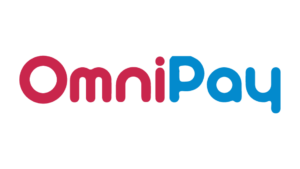SaaS Pricing Strategies and Models to Determine the Right Product Price

SaaS pricing means determining the price of a product or service SaaS firms provide. It is important to strike the correct balance between revenue and value, as your firm’s success depends on it.
If you undercharge, it can mutilate your business; on the other hand, if you overcharge, it will stifle your growth and turn away potential clients.
You must find the ideal price that doesn’t harm your business or your customers’ pockets. So, here are some well-liked SaaS pricing techniques that can work towards your growth.
Table of Contents
SaaS Pricing Strategies
Cost-plus Pricing
Cost-plus pricing is one of the simplest methods of pricing. The basic idea behind this strategy is to sell a product for more than you have spent on its production. Many businesses use cost-plus pricing as their primary pricing strategy.
This method involves very little market research and doesn’t consider consumer demands and competitor strategies.
For example, many companies calculate their production costs and determine their desired profit margin by taking random numbers, clubbing them together, and then sticking them on several thousand devices. It’s that simple.
However, this strategy can prove to be inefficient in the long run. Here’s the formula to calculate the cost-plus pricing.
Cost-plus pricing = Customer Acquisition Cost (CAC) + COGS + Margin
Customer acquisition cost: the money spent to acquire each customer
COGS: In SaaS, it’s typically money spent on cloud infrastructure, engineering, and support
Margin: Profit Margin
Competitor-based Pricing
Your competitor’s pricing also plays a role in determining your product pricing. It does not consider variables such as market demand or manufacturing costs; it merely finds publicly accessible information regarding the product price of your competitors. As a result, you can charge more, less, or the same as the competitors for your goods.
This pricing method is relatively straightforward and may help you survive in a cutthroat industry, although it limits your ability to set and experiment with prices.
Value-based Pricing
Value-based pricing is the most appropriate pricing model for SaaS companies. Customers’ opinions about the price of the product or service are considered in this technique.
By understanding your customer’s pain points, value-based pricing can assist you in pricing your product to meet their needs.
Penetration Pricing Strategy
Businesses that are new in the market employ the penetration pricing technique. It entails setting your product’s price lower than that of your competitors. This tactic can aid in establishing a firm foothold in a brand-new, cutthroat market. However, this is not a long-term plan because low pricing might result in loss.
Along with strategies, many SaaS pricing models can help you determine your product pricing.
What are SaaS Pricing Models?
Determining your products or service cost is called a SaaS pricing model. It is a method for choosing the best pricing for your product or service. Your SaaS product price can be bundled in various ways, and each model offers advantages and disadvantages.
Here are some of the SaaS pricing models.
Flat-rate Pricing Models
In flat-rate pricing, a product is provided with a particular set of features for a specific cost. There are no features or price packages available to choose from. As a result, you charge your clients the same fee regardless of the number of users or consumption volume.
The flat price model has a straightforward pricing structure, due to which fresh and lean SaaS products may attract clients more quickly and reduce decision-making time.
Since there are no complexities or varying price points to account for, forecasting revenue is much easier and more accurate. In addition, it facilitates communication by concentrating marketing and sales efforts around a single, well-defined pricing offer.
The one-size-fits-all approach may be straightforward to comprehend, but not all clients will benefit from it. You may give your clients the impression that they have no choice but to purchase your goods if you use flat-rate pricing. You miss out on any upselling possibilities because there is no way to upgrade plans.
Tiered Pricing Models
The tiered pricing model sells the product in various configurations and at different prices. The different prices depend on factors such as features, user count, or usage.
Often 2 to 5 product plans are made, and your consumers may select from these plans based on their demands. With this price strategy, you may gradually upsell features to your clients as they grow.
However, your consumers might get confused if the pricing levels are not set with the proper technique.
Tiered pricing models appeal to a range of clients, improving your market share and income potential while giving your customers the freedom to select the plan that best suits them.
Usage-based Pricing Models
With a usage-based pricing model, the client can pay according to how much of a product they will utilise. It is also known as the ‘pay-as-you-go’ pricing model.
Because it is closely correlated to the level of the usage of the product, customers frequently believe that this price structure is the fairest. There are absolutely no hidden costs, making it more transparent. In addition, it is made flexible enough to adjust to customer needs.
The consumer cannot be charged depending on the size of their business, and you risk losing money in the process. Another problem is that it might be challenging to estimate income since it depends on how your consumer uses your product, which is tough to assess.
Per user-based Pricing Models
In the per-user pricing model, businesses can set their prices according to the number of individuals using the product. According to this approach, firm income grows as more team members get access to the product. Since every account is charged, predicting revenue is made simpler.
Customers will find it simpler to grasp this model since it will be simpler for them to determine how much they will pay based on the number of users of the product.
However, organisations may choose to restrict the number of people who utilise the product due to cost-cutting efforts. Additionally, the possibility of login abuse exists and can delay your firm’s growth in the future.
Per Feature Pricing
In Per Feature Pricing, the cost of the product is determined by the features and functionality made available to your clients. Therefore, the more features a product has, the more it will cost.
The pricing levels are divided based on the capability provided for each product plan. It saves your customers money since they won’t have to pay for other features they might not require at this point in their business.
However, it is challenging to section the plans properly as it is impossible to determine which features customers need.
Freemium Pricing Model
A popular pricing strategy called “freemium” enables companies to get customers to sign up for the restricted product version for free. In a Freemium model, some functions are provided without charge, and customers can upgrade to a more functional product version by paying a fee.
Users should be enticed by your product so that you may subsequently get them to upgrade to the premium version.
Less than 10% of free users convert to paying clients, nevertheless. So, Freemium also partially lessens the product’s value in the consumer’s eyes.
Per Active User Pricing Model
When you employ a per-active user pricing model, you charge your members according to their activity. Businesses may purchase the product for the whole team, but they will only pay for those who use it.
Enterprise clients can thus purchase the software for their staff. As a result, it lessens the danger of adoption throughout the company.
Despite having access, some consumers might not utilise the product at all. Your revenue health may suffer if people use many logins through one account to cut costs.
Key Takeaways
Your SaaS company’s success depends on balancing value and revenue correctly. So, you will have to determine pricing for your SaaS products using the suitable SaaS pricing model.
To find suitable SaaS pricing, you must put yourself in your customers’ shoes and decide accordingly.



